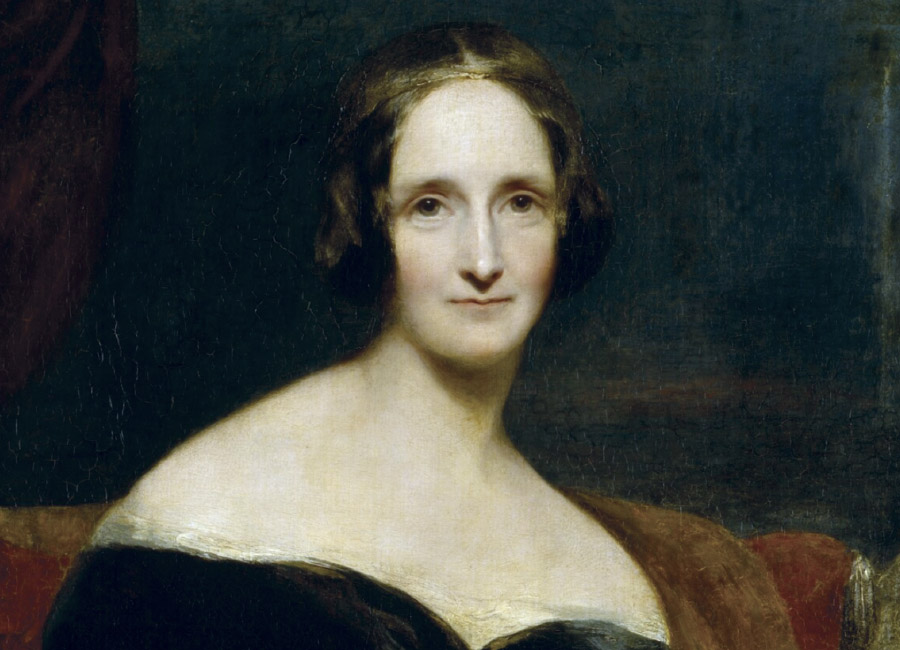Mary Shelley’s Frankenstein aka The Modern Prometheus was published in 1818 when Mary Shelley was just 20 years old. Inspired by a miserable, dark, rainy summer spent with her husband, Percy Bysshe Shelley, and George Gordon Byron (both English romantic poets) in Lake Geneva (on the border of Switzerland and France), the novel was the result of Lord Byron’s challenge to write a ghost story. Frankenstein explores ambition, morality and the consequences of playing God. Its central story - Victor Frankenstein creating life and facing tragic consequences - struck a chord that resonates even today.

The book has sold over 20 million copies worldwide and been translated into nearly every major language. Its influence extends beyond literature to theater, film and pop culture, making it one of the most enduring Gothic novels of all time. Written more than 200 years ago, Frankenstein is in the public domain, meaning that no one receives royalties from the original text.
“A Gothic novel is a type of fiction characterized by dark, mysterious and often supernatural elements. It typically features remote or eerie settings such as castles, mansions or stormy landscapes, and explores themes of terror, suspense, isolation and human ambition. Gothic novels often include tragic or morally complex characters, hidden secrets and dramatic conflicts between good and evil, aiming to evoke strong emotions of fear, awe and intrigue in the reader.”
1931: Frankenstein Hits the Big Screen
Universal Pictures’ Frankenstein (1931), directed by James Whale and starring Boris Karloff, brought Shelley’s story to life on the silver screen. Karloff’s portrayal of the Monster became iconic, defining the creature’s appearance and emotional depth for generations. Adjusted for inflation, the film’s domestic gross of $12 million translates to over $250 million today, illustrating its monumental success.
The 1931 film didn’t just succeed commercially; it shaped the horror genre itself. Its atmospheric direction, innovative makeup and Karloff’s sympathetic performance established a template for countless adaptations and sequels, including Bride of Frankenstein (1935) and Son of Frankenstein (1939).
Modern Adaptations: 1994 and 2015
Kenneth Branagh’s Mary Shelley’s Frankenstein (1994) returned to the emotional core of Shelley’s novel. With Robert De Niro as the Creature and a worldwide box office of $112 million, the film combined faithful storytelling with cinematic spectacle. It emphasized the tragic depth of both creator and creation, reminding audiences why the story endures.
Victor Frankenstein (2015), starring James McAvoy and Daniel Radcliffe, took a more adventurous approach. By focusing on the dynamic between Victor and his assistant Igor, the film blended horror with action-adventure. Though it earned a disappointing $34 million worldwide, it showed how the Frankenstein story can be reimagined for modern audiences.
Guillermo del Toro’s Frankenstein (2025)
The latest iteration, Guillermo del Toro’s Frankenstein (2025), stars Oscar Isaac as Victor Frankenstein and Jacob Elordi as the Creature. Premiering at the Venice International Film Festival, the film received a 13-minute standing ovation, signaling both critical and audience acclaim.
Del Toro’s adaptation emphasizes the humanity and vulnerability of the Monster, exploring themes of parental responsibility, guilt and existential struggle. Rather than a purely terrifying figure, the Creature is portrayed with depth and empathy, highlighting the emotional consequences of creation.
The film has just been released in theaters, and will be available on Netflix in November, blending traditional and modern distribution strategies.
Why Frankenstein Endures

From Shelley’s manuscript to Universal’s 1931 classic, modern adaptations in 1994 and 2015, and now del Toro’s 2025 vision, Frankenstein has proven to be a timeless story of ambition, creation and humanity. Each adaptation reflects its era while keeping the core themes intact: the tension between creation and responsibility, the search for identity and the consequences of pushing boundaries.
With millions of book sales, decades of influential films and a blockbuster 2025 release, Frankenstein continues to captivate audiences, and will likely do so for centuries to come.
Now that you’ve read today’s blog, why not take what you’ve learned and play today’s matching quiz on your Quizefy app? Many of the answers can be found right here. We publish an on-trend, hint-filled blog at www.quizefy.com every Tuesday, along with a matching quiz in your Quizefy app. We think they’re a great combination and a great way to Strut Your Smart.

